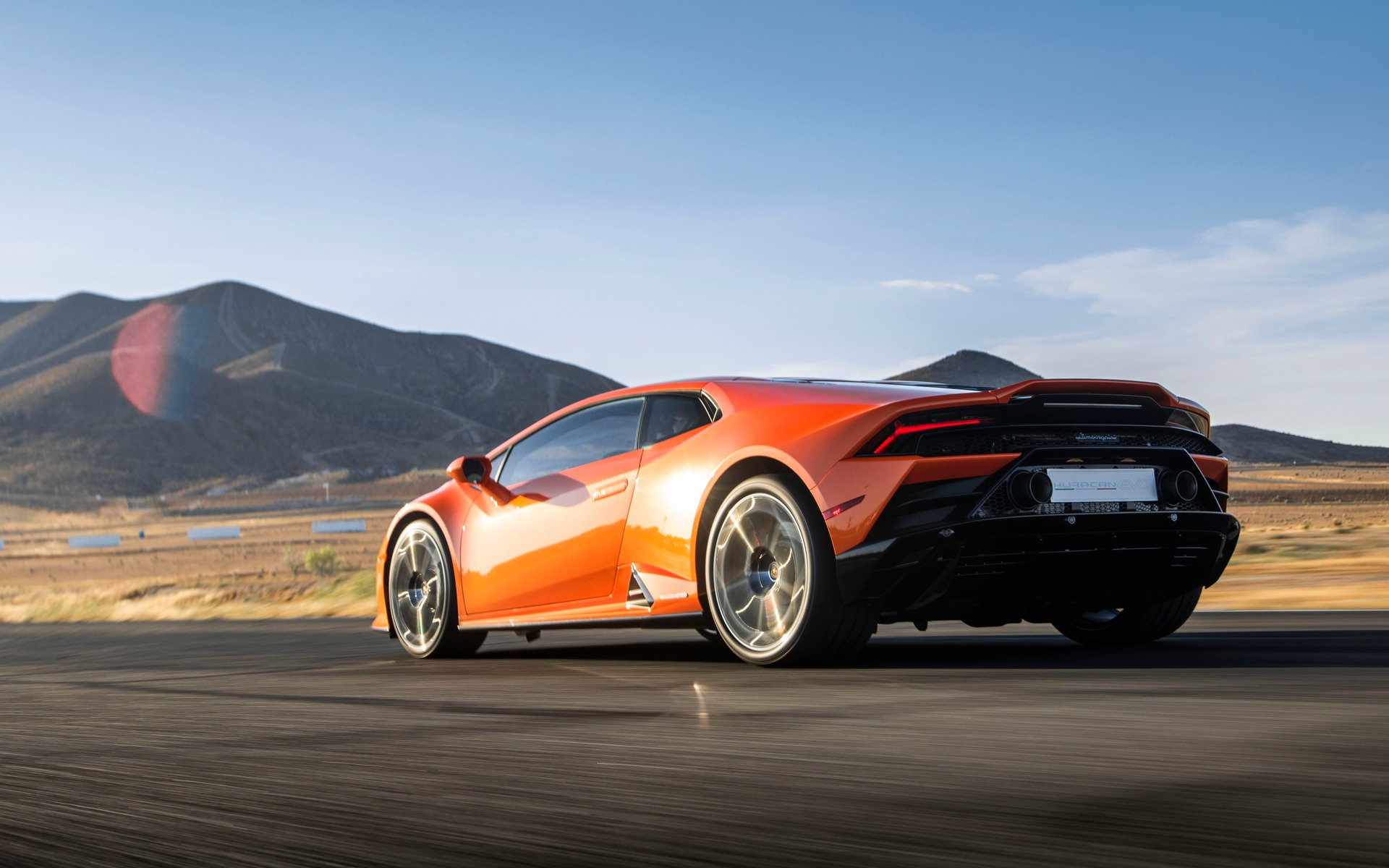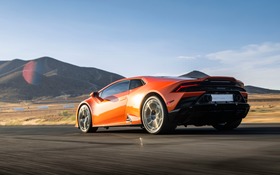2020 Lamborghini Huracán Evo: Electronic-driven Performance

| Strong points |
|
|---|---|
| Weak points |
|
The new, more evolved version of the Lamborghini Huracán, aptly named Evo, joins the furious and extreme Huracán Performante by using advanced electronics to offer a more balanced performance proposition. Take a seat as we hit the Willow Springs International Raceway in California!
The growl of the naturally aspirated 5.2-litre V10 coming to life leaves no doubt: This test drive will be a radical departure from most other cars. While the entire auto industry is obsessed with downsized, turbocharged engines, this mill is one of the few remaining giants of the internal combustion world, delivering characteristic sound effects as it pushes relentlessly toward its 8,000 rpm redline.
- Also: Lamborghini Huracán Sterrato Redefines Off-road Performance
- Also: 2020 Lamborghini Huracán EVO: Updated and Improved
There’s something genuinely visceral about driving this machine and the sensory experience it provides. Thank God we still have cars like the Huracán and Audi R8 to indulge ourselves with V10 power. But for how long? With ever-increasing emissions standards, this fabulous Italian block’s days are obviously numbered.

To create the Huracán Evo, Lamborghini engineers made various upgrades to the Performante, such as titanium valves and a less restrictive exhaust system. The result is goosebump-inducing acceleration courtesy of 631 wild ponies backed by 443 pound-feet of torque. Every second at full throttle behind the wheel of this supercar feels like a glorious moment as the adrenaline flows massively.
Advanced Electronics
The phenomenal power generated by the engine is controlled by an all-wheel drive system and dual-clutch transmission, similar to the Huracán Performante, as well as an active four-wheel steering system derived from the Aventador S. Essentially, the rear wheels pivot in the same direction as the front wheels when driving at high speeds, and in the opposite direction at lower speeds, making the car more agile.
However, the biggest difference between the two Huracán variants comes down to the Evo’s more advanced electronics, which allows it to anticipate the driver’s moves almost intuitively.

A high-tech system called Dinamica Veicolo Integrata continuously adjusts the magnetic dampers to ensure optimum handling and stability based on data collected by sensors. Meanwhile, a torque-vectoring system effectively distributes torque between the front and rear axles as well as left and right.
Thanks to these sensors, plus three gyroscopes and three accelerometers located in the car’s centre of gravity, and a sophisticated algorithm that can detect both the drive mode and the driving conditions, the Huracán Evo is able to adapt to any situation in real time, even before you think about it.
On the track, the state-of-the-art electronics work in perfect harmony with the rest of the car—an impressive technical feat, for sure. In Corsa (race) mode, which is more permissive, the Evo becomes a playful performer that drifts its way out of corners in convincing fashion. Pure bliss.
Unfortunately, the track-only event prevented us from assessing the effects of the car’s electronics on public roads. According to Lamborghini engineers, the Evo is a more realistic daily driver than the Performante, which is completely and unapologetically focused on raw performance.
You can see and feel the difference in aerodynamics, too. The Performante benefits from active aerodynamics that maximize downforce with no regard for drag, while the Evo uses a more balanced approach reflected in a body that is noticeably less extreme.

New Interface
The Huracán Evo also gets a new interface with a colour touchscreen on the centre stack. It is different from the one in the Urus SUV, but it positively addresses one of the most glaring issues inside Lambo’s entry-level supercar: an infotainment system derived from Audi’s previous-generation MMI.
Pricing for the 2020 Lamborghini Huracán Evo starts at $313,529. There are plenty of options to choose from, so needless to say you can easily spend a fortune on this car.
At the end of the day, the Evo impresses as a more agile and more driver-friendly version of the Huracán. The Performante is racier and more radical not only because of the aforementioned aerodynamics, but also the racing buckets that feature no height adjustment or reclining seatback. It is obsessed with performance whereas the Evo is more accommodating, yet ferociously fast. Pick your weapon.











